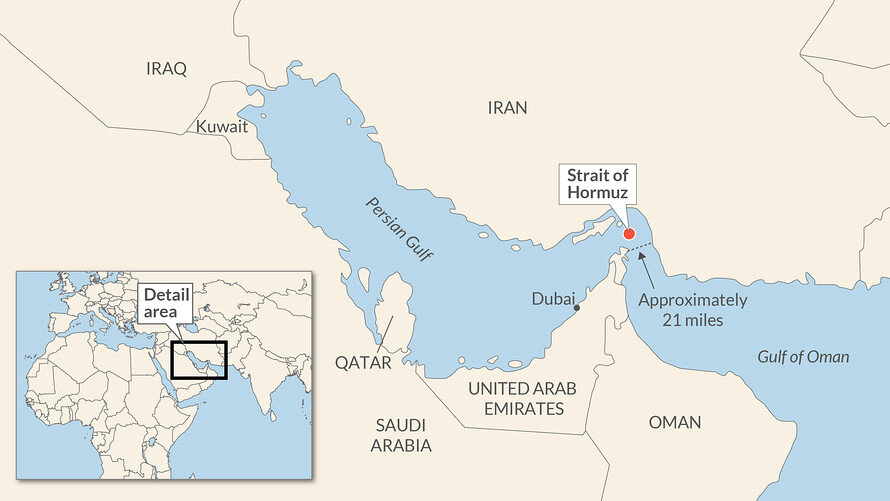Strait of Hormuz | 14 May 2019
In a recent incident, four commercial vessels were sabotaged near Fujairah (an emirate of the UAE), one of the world’s largest bunkering hubs lying just outside the Strait of Hormuz.
- The incident has come at a time of heightened tensions in the Gulf. The US has deployed an aircraft carrier, bomber planes and defense missiles to the region amid rising tensions with Iran, which has threatened to block oil shipments through the Strait of Hormuz if the US succeeds in halting its energy exports.
Background
- In 2015, Iran agreed to a long-term deal referred to as the Joint Comprehensive Plan of Action (JCPOA) on its nuclear programme with the P5+1 (US, UK, France, China, Russia and Germany).
- Under the accord, Iran agreed to limit its sensitive nuclear activities and allow in international inspectors in return for the lifting of crippling economic sanctions.
- The US withdrew from the deal in 2018 and also recently eliminated the exceptions to US sanctions on Iranian oil.
- Sanctions have pushed Iran’s economy towards crisis. Recently, Iran has threatened to scale back its obligations under the 2015 nuclear deal and to close the Strait of Hormuz.
Strait of Hormuz
- The waterway separates Iran and Oman, linking the Persian Gulf to the Gulf of Oman and the Arabian Sea.
- The Strait is 33 km wide at its narrowest point, but the shipping lane is just three km wide in either direction.
- Most crude exported from Saudi Arabia, Iran, the UAE, Kuwait and Iraq – all members of the Organization of the Petroleum Exporting Countries (OPEC) – is shipped through this waterway.
- It is also the route used for nearly all the liquefied natural gas (LNG) produced by the world’s biggest LNG exporter, Qatar.
- The UAE and Saudi Arabia have sought to find other routes to bypass the Strait, including building more oil pipelines.
